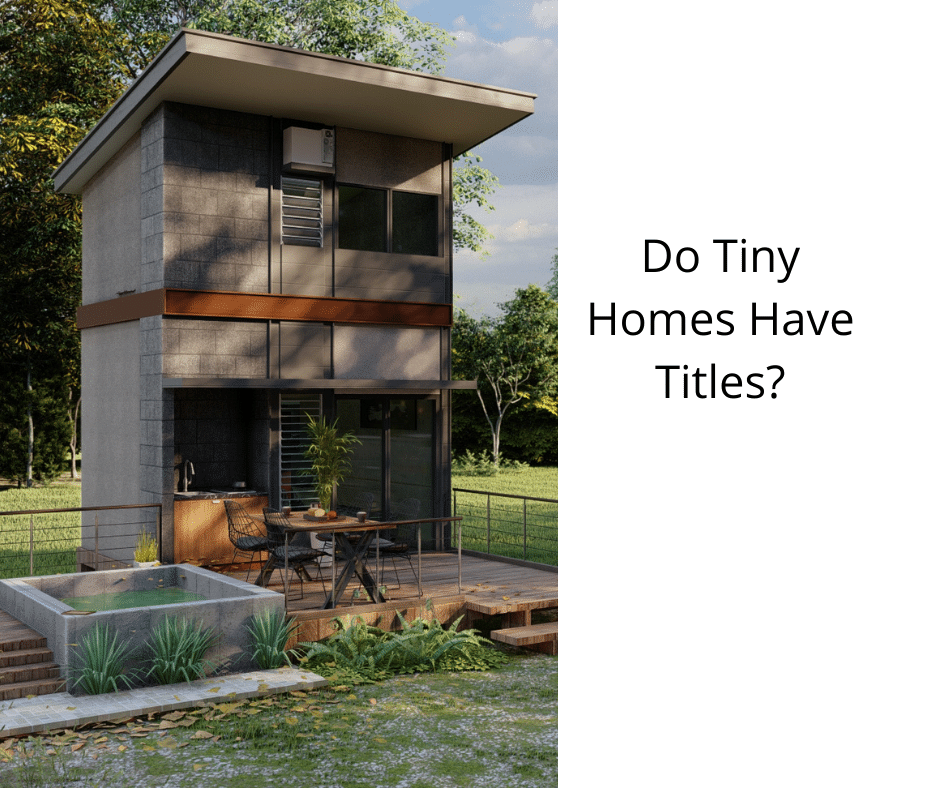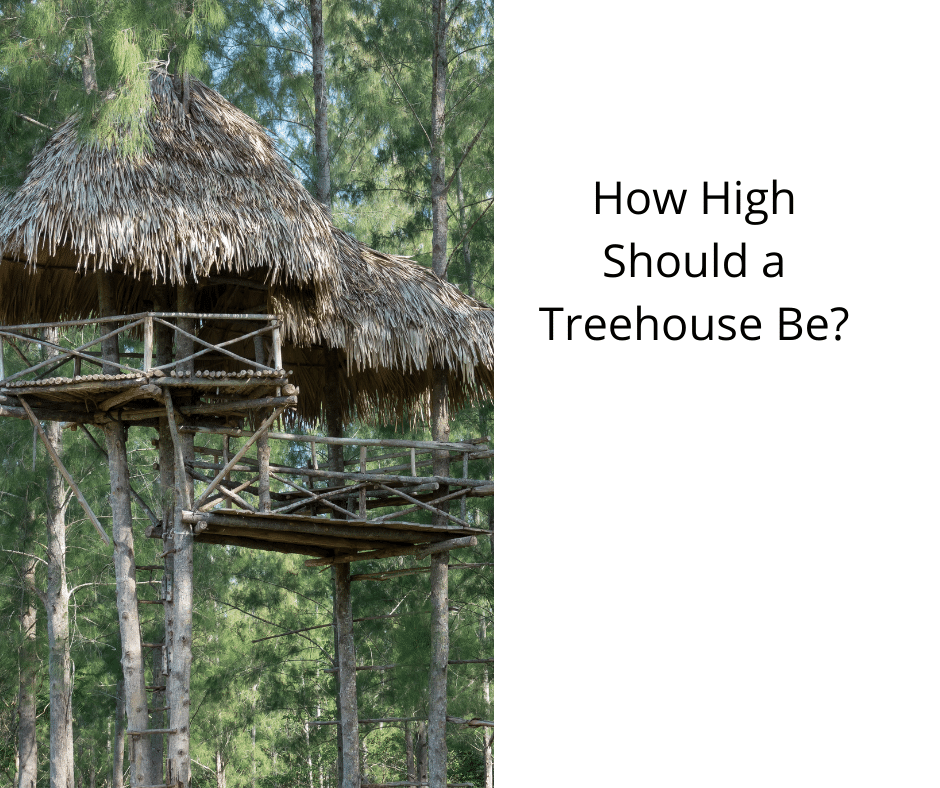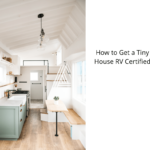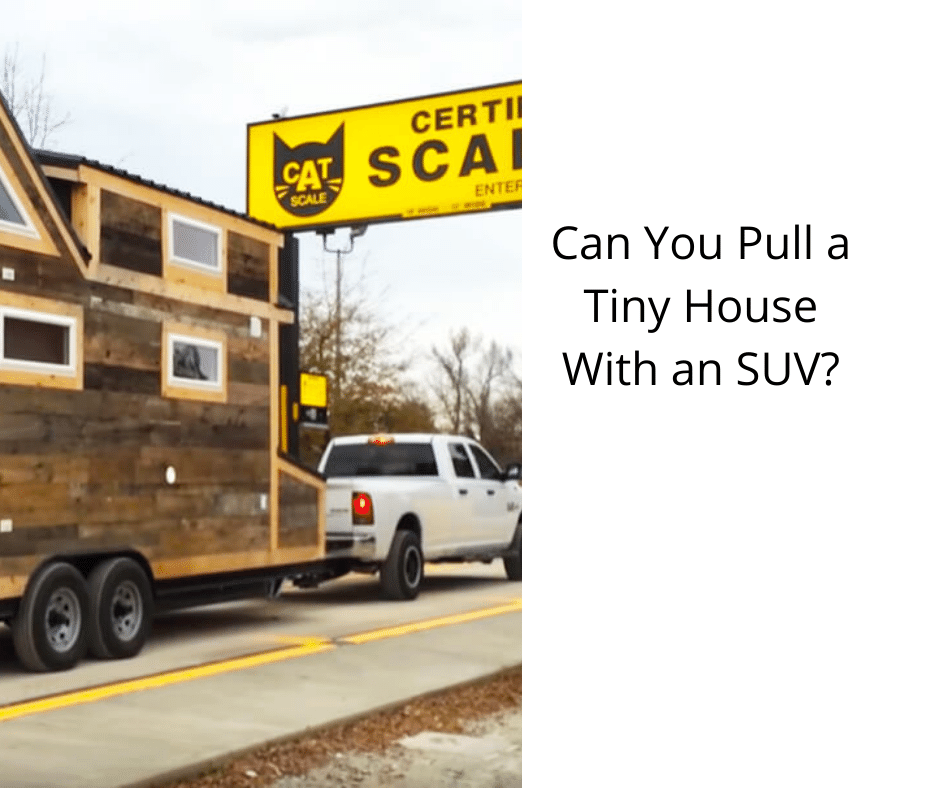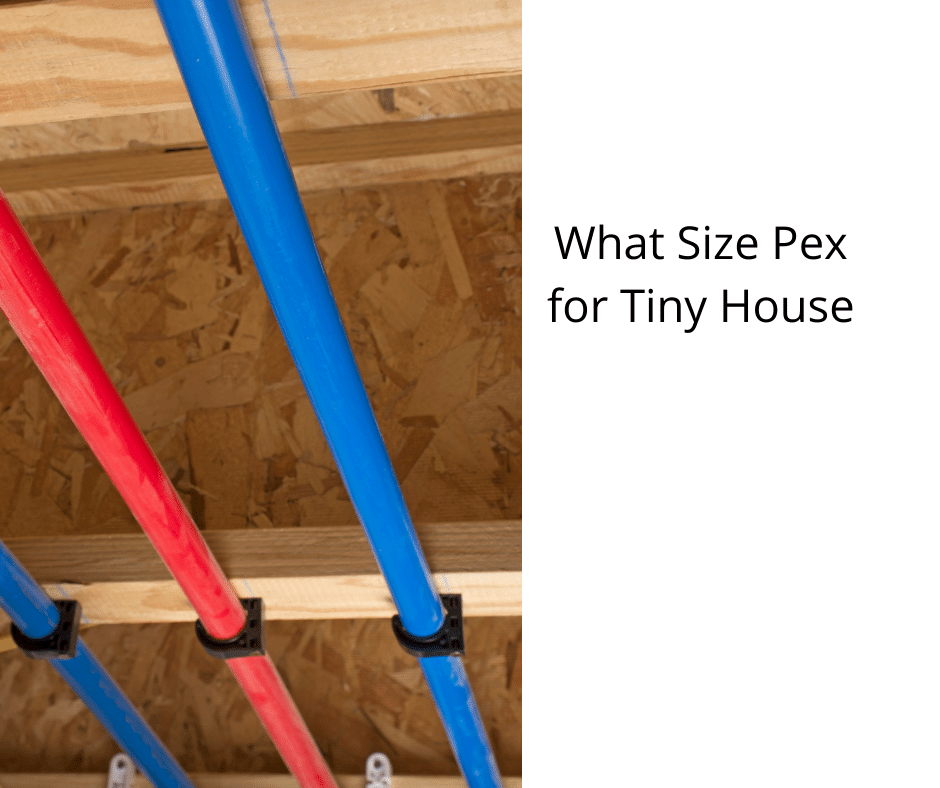A compact home may be subject to inspection by the Department of Motor Vehicles (DMV) or could be reclassified as a Travel Trailer (TV). If the small home is custom-made, you may obtain a Manufacturer’s Statement of Origin (MSO), a crucial document required for DIY vehicles by state DMVs. The manufacturers usually imprint serial numbers on the engine and frame components. It is recommended to obtain an MSO when building your tiny home.
Getting a Title for A Tiny Home
When buying a tiny home on wheels, you should always get a copy of the title. Tiny homes are not titled the same way as cars, and you should check to make sure the seller can transfer the title to your name. In some instances, you may have to file a lien against the title to ensure that the house is yours. Liens are usually placed by individuals or lenders who haven’t received their money back.
The title is also important because it determines who owns the house. Titles are always included with tiny house trailers, and they are also used to buy and sell the home. In most cases, the title will not be transferable if you plan to move it immediately. Hence, you should always make sure that the seller will not damage your tiny home while you are driving it to a new location.
Regardless of where you buy a tiny home, you need to make sure that you register it in your state. Registration requirements for tiny homes differ from state to state, so you may need to check your local laws to ensure that you are in compliance with the requirements. However, registration is easy and fast if you buy a tiny home from a registered manufacturer. The registration process is similar to buying a used car – you pay the seller, he gives you the title and you are ready to move in.
Aside from obtaining a title, you also need to have registered land. This land can be a very expensive investment, so you must ensure that you have a legal title. When buying land, you should find a realtor who specializes in this kind of property. You should also check with the local planning department and make sure that your proposed location has no zoning laws. If you don’t have registered land, you must contact a qualified realtor and get permission in writing before you begin construction.
The size of your tiny house also has to be in accordance with local laws. In Texas, tiny houses are legal, but building codes and laws vary by city and county. Some counties have strict regulations, while others don’t have any at all. Whether your tiny home is a vacation cabin, an office building, or a place to live, it will likely be subject to local regulations. Generally speaking, the square footage of a tiny house must be less than 950 square feet, and this will vary depending on the city and county where it is located.
Zoning Requirements
Before building a tiny home, it’s essential to review the zoning requirements for your area. Zoning regulates the use of land and can vary wildly. Some parcels of land are zoned for medical facilities while others are intended for residential homes and retail centers. If you want to build your tiny home in an area with strict zoning laws, it’s important to check the rules and regulations first. Some zoning regulations can be changed, but it can take time and effort. Some are determined at the federal level and can be difficult to modify.
While many areas of the country have zoning requirements for tiny houses, some communities are more accommodating than others. In Nantucket, for example, a citizen-led initiative has resulted in an amendment to the zoning code, allowing residents to build tiny homes. In addition to the amendment to the zoning code, the city has added definitions for tiny houses and tiny homes on wheels. The Rockledge Tiny House Community will be made up of homes that range from 150 to 700 square feet.
While Utah is slowly accepting tiny houses, zoning regulations are still lagging behind the demand for affordable shelters. Mobile tiny homes are only permitted in tier one and base zones in some areas. Washington County, for example, only allows 300 square feet of tiny homes, and these must be on a permanent foundation. In addition, they must be connected to public utilities. In addition, wheeled tiny homes must follow the regulations for park model recreational vehicles.
In Connecticut, the Tiny House Appendix is set to be adopted. Appendix Q sets standards for tiny houses. These standards are only applicable for buildings that are on foundations. If you plan on moving your tiny house to another state, you’ll need to find an approved land permit for the state. The state’s tiny house appendix will be a good starting point. In the meantime, the state will be able to make some decisions based on the zoning code.
Building Codes
There are several differences in building codes for tiny houses. Louisiana building codes specify that tiny houses must comply with the 2012 International Residential Code. These codes require that each room be 120 square feet in size, contain stairs in the loft, and have an emergency exit window. These requirements are also different from the standards for standard dwellings. But in most states, tiny homes are exempt from building codes. If you’re planning to build a tiny home, there are several things you should know.
First, you’ll want to check local zoning regulations. Some parcels are zoned for hospital or medical centers. Others are zoned for residential homes or retail centers. You need to check these zoning rules before you build your tiny house. Remember that you’re not required to build your home on the zoning requirements for your city, so make sure you check with your local jurisdiction before you build. If you’re building your tiny house on private property, you may not even need to worry about building codes.
Tiny homes are allowed on wheels in certain states, but you must check with local authorities if they allow them. In addition, there are state laws that will regulate what kind of construction is allowed. For example, in Kansas, you can’t build a tiny house if it’s considered an accessory dwelling unit. But if you plan to live there permanently, then you’ll want to follow local rules and regulations. In other states, you’ll need to consult with local agencies to find out if the tiny house is allowed or not.
One of the biggest reasons tiny houses are so controversial is that the size of the space required to meet the requirements is small. In most states, the state’s tiny homes must be no larger than 320 square feet. If you build a tiny house with a smaller floor area, you’ll be allowed to use it as an accessory dwelling unit. This is important because it’s an accessory dwelling unit that will be on a smaller scale than a typical house.
Finding a Place to Live in A Tiny Home
Before you move into your tiny home, you should look at the size and location of your property. You can choose land in a rural county because the zoning laws are less strict and there are ample parking options. You can also choose land that is off-grid, which will give you more independence. While this isn’t an option for everyone, it is an option for those who need to live in a rural area but cannot afford to rent.
In addition to New York, there are many other states where you can live in a tiny home. In Oregon and California, tiny homes are becoming increasingly common. Although some states still have zoning regulations that prevent the construction of tiny houses, others are allowing them. While it is still a bit more difficult to find a location for a tiny home, there are a few ways to find an appropriate space.
The traditional route involves using a real estate agent to buy land. This agent is paid by the land owner and is legally responsible for representing the interests of the buyer. They should be familiar with the area’s zoning laws and zoning regulations and have the knowledge and expertise to help you navigate the land buying process. It is also advisable to use an agent who specializes in buying land for Tiny Houses.
You can also find tiny home communities online. Some of these communities are open to the public, while others only accept tiny homes that are less than 200 square feet. Check out these communities if you are looking for land. If you live in a tiny house community, you should be able to find friends and neighbors to share the life with you. The good news is that there are a growing number of tiny house communities in the country. It is also important to find one in your state or region.
Tiny homes come in many different shapes, sizes, and styles. A basic design for a tiny home is just under two hundred square feet. However, you can also build a small cabin from logs, or customize an old shipping container. You can even have a tiny house on wheels! You can live in one of these homes anywhere – on the shore of a lake, in the woods, or even in an urban area.
I’m Theodore, and I love tiny houses. In fact, I’m the author of Tiny House 43, a book about tiny houses that are also tree houses. I think they’re magical places where imaginations can run wild and adventures are just waiting to happen.
While tree houses are often associated with childhood, they can be the perfect adult retreat. They offer a cozy space to relax and unwind, surrounded by nature. And since they’re typically built on stilts or raised platforms, they offer stunning views that traditional homes simply can’t match.
If you’re looking for a unique and romantic getaway, a tree house tiny house might just be the perfect option.
